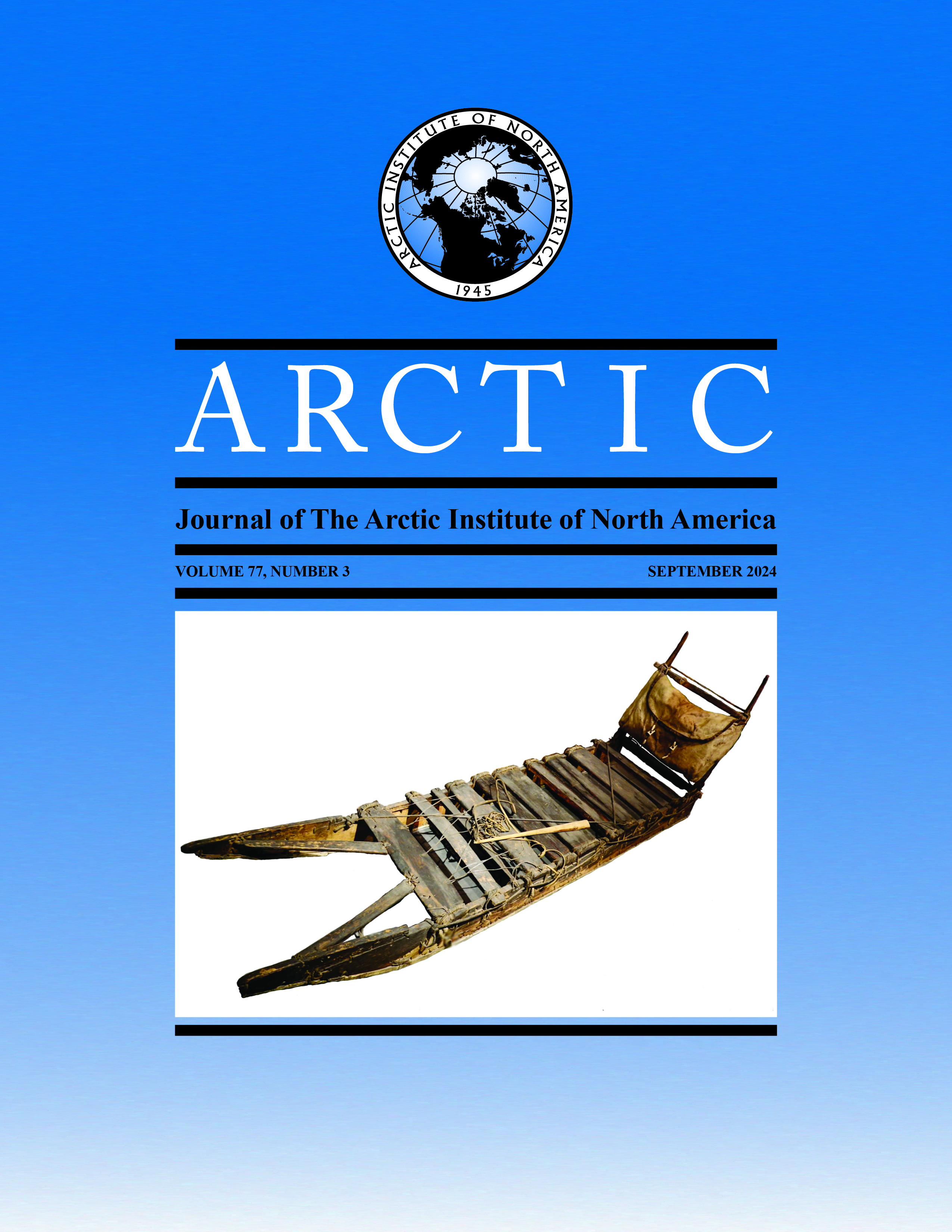Inuit Traditional Ecological Knowledge of Anadromous Arctic Char, iqalukpik (Salvelinus alpinus) Under Changing Climatic Conditions in the Amundsen Gulf, Western Canadian Arctic
DOI:
https://doi.org/10.14430/arctic79391Keywords:
adaptation; fisheries; Indigenous; Inuvialuit; subsistence; TEK; UlukhaktokAbstract
Inuit in the western Canadian Arctic have observed climate change impacts in marine and freshwater environments that have resulted in changes in the abundance, health, and movement ecology (an understanding of home range and movement patterns) of Arctic char, iqalukpik (Salvelinus alpinus), with implications for their fisheries. This research was co-designed with Inuit to investigate reported changes in anadromous Arctic char in waters near Ulukhaktok, Northwest Territories, Canada. An analysis of semi-structured interviews with 26 Inuit fishers not only documented changes in Arctic char population abundance, spatial movement, appearance, and taste, but also changes in access to the fishery. Over the past several decades and becoming pronounced in recent years, fewer fish, and specifically fewer medium-sized fish, which are preferred by fishers, have been caught using nets near the settlement, with some showing poor body condition, and others appearing to originate from lakes outside of the expected spatial range, earlier in an extended, summer coastal fishing season. Inuit have observed changes in individual fish, as well as broader environmental changes that disrupt fishing activities. These changes include: an increasing prevalence of Pacific salmon; warmer air and marine sea surface temperatures; inconsistent sea and lake ice conditions; stronger and more frequent wind and wave activity; fluctuating water levels in rivers; and a seasonal tunicate bloom. Inuit have responded to these changes by altering personal subsistence fishing practices and temporarily halting a small-scale, community-based commercial fishery because of observations in stock declines and in order to prioritize the subsistence fishery.
Downloads
Downloads
Published
Issue
Section
License
Copyright (c) 2024 ARCTIC

This work is licensed under a Creative Commons Attribution 4.0 International License.


